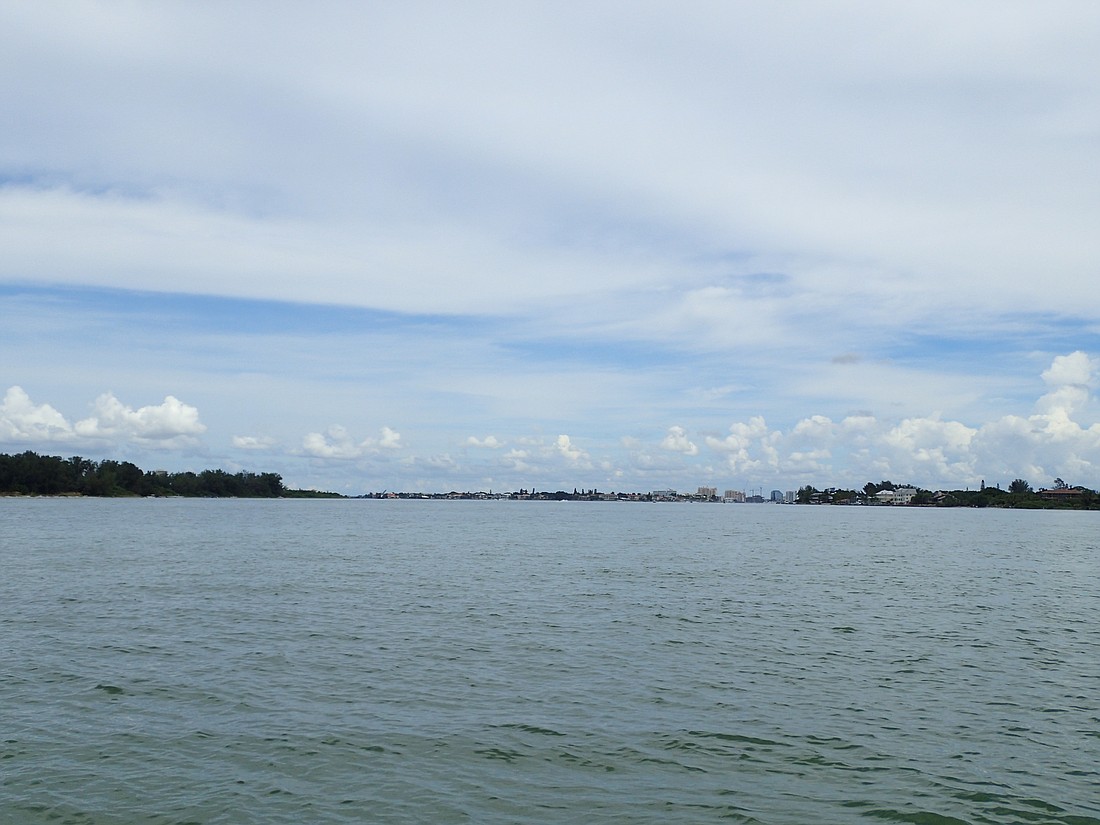- May 4, 2024
-
-
Loading

Loading

A county-ordered peer review of the proposed dredging of Big Pass states the U.S. Army Corps of Engineers has not provided enough documentation to demonstrate the controversial project should proceed.
As county staff conducts a final review of the report, it’s still unclear what implications the document will have on the dredging effort. Although the analysis does not provide a conclusive statement on whether Siesta Key would be impacted by the project, it does state that insufficient evidence exists to address the county’s concerns.
“The report documents no adverse impacts,” the review states of Army Corps-provided information. “However, the deficiencies in the documentation of the data and model create uncertainty in this regard.”
The Army Corps, in tandem with the city of Sarasota, is working on a long-term plan to renourish eroded portions of the Lido shoreline with sand from Big Pass, which has never been dredged. That proposal has been met with concern from county officials and residents on Siesta Key, who worry about the project’s impacts on the island and other coastal amenities.
In April, the county hired coastal engineering firm Atkins to conduct a third-party analysis of the project. After releasing a draft last month, the consultant submitted its final report Oct. 29.
The report is frequently critical of the evidence the Army Corps uses in support of its conclusions. On several fronts, Atkins suggests the project needs more modeling or updated data before it can be safely concluded the dredging will do no harm. Questions pertain to plans for two sand-retaining groins on Lido Key, the source of the sand in the Big Pass ebb shoal and the historical environmental data used in the models.
Laird Wreford, the county’s coastal resources manager, said it’s too early to know exactly what the next steps might be for the county. Copies of the report have been provided to the city, the Army Corps and the Florida Department of Environmental Protection, which is currently reviewing a permit application for the project.
Wreford said the working relationship between city and county staff has been good as this proposal has evolved, and he’s optimistic the city will be willing to consider the criticisms levied in the review. He said the two sides were sympathetic to each another’s positions — the county knows Lido needs to be renourished, and the city knows Siesta needs to be protected.
If the city and Army Corps end up fundamentally disagreeing with the county, Wreford said there is no direct point of authority that would allow the county to stop the project. It’s likely the city will seek permission to use county land during construction, which would give the county an opening to take a stance on the project.
Ultimately, Wreford thinks it won’t come to that.
“I believe that the city and the Army Corps will make an effort to address the issues raised in the peer review report,” Wreford said. “I think that would be good for the entire community, to have a chance to provide some answers, information and clarification on some of those points.”
City Engineer Alex DavisShaw declined to comment on the review and had not received the document as of Friday. After the release of the draft report, she was skeptical about the lack of specifics present but said she would hold off on any response until Atkins released its final report.
"I think that would be good for the entire community, to have a chance to provide some answers, information and clarification on some of those points." — Laird Wreford
For critics of the Army Corps plan, Atkins’ report is seen as validation of their concerns. Save our Siesta Sand 2, an activist group formed in opposition to the dredging, says it doesn’t make sense to remove sand from the Big Pass shoal without a closer examination of the impacts to Siesta Key.
“The risks of proceeding without this information are simply too great, as once any dredging has occurred the damage cannot be undone and the financial stakes are too high,” SOSS2 Chairman Peter van Roekens wrote in an email to the County Commission.
Atkins raises several other issues with the dredging. The group believes there is a higher degree of risk because the sand would be “back-passed” from a southerly source. Most renourishment efforts use sand that would follow the natural path of sediment movement — which, for Lido, would necessitate a source to the north.
Although the report supports some renourishment effort for Lido Key, it does not agree with the Army Corps’ conclusion that no other sand source for the project could be located. Because the proposed dredging would be the first step in a 50-year renourishment effort, Atkins suggests a different sand source could be used initially as the Army Corps works to bolster its data.
“We recognize the need to nourish Lido Key and believe that there are ways to provide an intermediate nourishing while studies are validated or, if needed, additional studies implemented,” the report states.
Even if the Army Corps is able to provide the requested verification, the report suggests an alternative sand source should be used for renourishment — or at least a smaller amount of Big Pass sand than the proposed 1.3 million cubic yards.
If the project moves forward with the requested data, Atkins recommends close monitoring of how the renourishment impacts the sediment transport system. If the Army Corps moves ahead without providing the requested data, Atkins encourages the creation of predefined mitigation plans and funding sources in case something goes awry.
“Without those assurances, we recommend that the county should consider actions to hold a responsible entity accountable for activities that directly or indirectly result in impacts,” the report states.